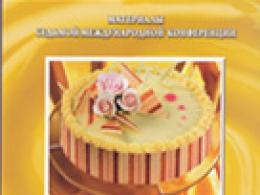Wire jewelry: key pendant. Master class craft product modeling design key-heart multi-photo beads wire Wire key
Hello dear craftswomen. After looking at pictures on the Internet, I wanted to make myself a small wire pendant key. I did not look for a master class and came up with my own version. In my opinion, it turned out a little skewed (especially the upper part), but for the first experience of such work it is acceptable. I hope it will be useful to you, at least to prevent my jambs: D
So, we need:
✔ Thick copper wire (you can use any other)
✔ Thin copper wire (as for beads)
✔ Sheet of paper and pencil
✔ Round nose pliers and pliers
✔ Anvil and hammer (if available)
✔ A little imagination

To begin with, we draw an approximate sketch of the future key in detail - each detail separately. Carefully monitor the size of the parts and estimate by eye how they will look together. It was here that the biggest jamb happened to me, because of which the entire upper part of the key does not suit me.

I don’t know about you, but personally I estimate the length of the wire, applying it to the drawing without cutting it off from the skein until I measure the approximate length.
Measured, cut off, stepped the edges with sandpaper if necessary. We bend the loop with round-nose pliers and after about 5-7 mm or, depending on your drawing, we bend the wire and press it with pliers. It turns out something like this.

We again apply the wire to the drawing and make a small fold with round-nose pliers at the beginning of the large loop.

Personally, I made loops with a pencil. The size is the same if you do not specifically unwind the additional wire, such as for the central loop. But with the twisting of the loops, I think everyone will cope))

We get these loops and bend the loop at the remaining end. If necessary, we cut the wire so that the distance between the loops is equal to the diameter of the bead (if one is planned) or about 5mm, I think this will be enough.

By analogy, we make the rest of the details of the key. I rewound as it seemed to me at first a lot of wire for this part and I changed it. But later it turned out to be too small, so follow the rule "Measure seven times, cut one", so that it would not turn out as insulting as mine.

We lightly beat off the details on the anvil (here, too, a large jamb came out with eyelets) and apply to each other, figuring out how everything will look.

We take the main part, postponing the rest. We fix the thin wire from below and begin to wind it as you please. For example, I wrapped it with half loops. Approximate scheme after the photo. If you don't understand, ask. I'll try to explain.


We wind up to the loop, make a couple of turns on the loop itself and fix the bead, if it was intended. If not, skip this step and move on.


I think the principle does not need to be explained in detail. Three turns on the top and middle wires, three on the middle and bottom, and so we alternate to the very top.

As a result, we get something like this)) The fact that the end of the auxiliary wire sticks out is nothing to worry about. Later it will not be very noticeable. It will be much easier to disguise it than to try to cut it out in this situation.

My least favorite part. A bunch of stocks and not very nice came out in my opinion. We fix the wire at the top of the part and make 5-7 turns in one direction.

We attach the part to the main one and begin to weave them together. I don’t have photos of this process, since all I could do was hold the structure so that it would not fall apart. The principle of weaving is the same as at the beginning of the main part. The scheme is the same. But you can come up with your own version, maybe it will turn out even better and more beautiful than this. And yes. I wove the details in a circle. That is, I wove the right part from the bottom up. If you do the same, then you need to start the wire not from the side, but from the inside. Otherwise, it turns out that on the left the "pigtail" is directed, as it were, downwards, and on the right, as it were, upwards.

There were no problems with decorating the sides, except for one unfortunate failure - when attaching the second bead, the wire came off, but it was not difficult to replace it. The principle is this - we begin to braid the large loop of the detail along the bottom, reaching the top from below, we stretch the wire into a small loop and string the bead, draw the wire along the side of the bead and wind it down again. And so 4 times until it turns out as in the photo. The wire can either be fixed and cut off, and a new one can be attached to the second edge, or the wire can be passed along the bottom and done in the same way as the left side.

We fix the wire, we press it, if necessary, we age it if desired, I just didn’t find the “older” in my place, but somehow I’ll take care of this matter.
So, the list of jambs that I found for myself and which I need to correct for myself in the following works:
✔ "Teeth" of the key. In the process of work, you can see what happened to me with them. It came out because of a bunch of attempts to fix / fix them and so on
✔ It is necessary to work out the drawing in more detail and carefully monitor the length of the wire and the dimensions of the parts. Otherwise, it turned out that the second part turned out to be much smaller than I expected.
There were a couple of minor flaws, but this is already determined by the curvature of the hands))

The copper key will become a mysterious and original decoration that will perfectly complement the steampunk or boho look, and can also be used as an interior accessory.
In order to make such a key with our own hands, we need:
- copper wire: 2 pieces about 40 centimeters long, thick (1.2 mm in diameter) and very thin;
- flat small bead, about a centimeter long;
- pliers;
- small vise or clamp;
- anvil (you can take any metal bar, for me it’s a part from a dumbbell);
- a hammer.
Making a key from copper wire

First we create the top part of our key. We take that wire that is thicker, combine the ends and bend it with a “fish”.

We pull on the ends until the loop shrinks to about 1.5 cm in length.

Now you need to make side loops. Holding the place where the wire crosses, we draw one of the tails of the wire in a circle and tighten the loop to the desired size (about 1 cm in length).

We do the same with the second tail. I just do it with my hands, the copper wire is quite soft. But if it seems hard, you can always help yourself by grabbing the ponytail with pliers.

The procedure must be repeated on both sides again, as a result, five loops should be obtained. We put our workpiece on the anvil and begin to knock with a hammer.

It is not necessary to hit too hard, the main thing is to keep the hammer even so that it does not fall on the edge and does not leave ugly dents on the workpiece. The ends of the loops can be flattened harder, but where the wire crosses, it is important not to overdo it so that it does not break.
This is roughly how it should turn out.
Cunning: you can beat the workpiece only from the side that will then be the wrong side. Then the front will turn out smooth and even.

We clamp the workpiece in a vise so that the ends stick out, and begin to twist them together.

We twist to the place where the beard of the key will be (about 3 cm). Then we bend one of the ends at a right angle, and straighten the other down.

Stepping back about 2.5 cm, grab the lower end with pliers and begin to bend.

We bend to the end and tighten it more tightly with pliers.

Again we clamp the key in a vice, trying to press both the bent end and the twisted part.

Now we grab the end of the resulting loop with pliers and twist, and then bend the remaining tail parallel to the second.

We cut to an equal length and gently give a rounded shape with pliers.

And again we put it on the anvil and knock with a hammer. The very tip of the key and the beard can be flattened more strongly, with the rest we try not to overdo it.

It remains only to attach the bead. Take a thin wire, cut in half. We pass both pieces through the bead and put it in the center of the upper part of the key.

Now you need to wrap each tip of a thin wire around a thick wire 2-3 times. To get rid of protruding tails, we bend the wires at the very base several times, and they break off neatly.
Ready! Can be hung on a string or chain and worn with pleasure.

Vintage jewelry never goes out of fashion, but this is not surprising, because they have tenderness, brightness, and zest. Many fashionistas in modern world they love jewelry with keys very much, but their (jewelry, not fashionistas) only minus is that basically such keys are a stream production, which means that it is the highlight of the vintage jewelry that is lost, but this is fixable if you are a needlewoman. Indeed, in this case, you can make a simple and elegant pendant in the form of a key for yourself. It will be yours, exclusive decoration with a soul.
For the pendant we need:
Copper wire with a cross-sectional diameter of 1.3 mm (maybe a little less);
Copper wire 0.3 - 0.4 mm;
Pen or other rounded object with a roundness diameter of 8 mm;
2 bright bicone beads;
Clock gear or something similar;
Bale for pendant;
wire cutters;
round nose pliers;
Pliers.
So let's get started:
1. Cut a piece of thick wire about 23 cm long and immediately mark the middle on it.
2. Take a pen with a diameter of 8 mm and make the first half circle in the center of the piece of wire, and then step back 20 mm and make two more half circles on the sides.
3. From the side circles, align the wire so that you get an angle of about 90 degrees and both wires are parallel.
4. Step back 5 - 5.5 cm from the top of the clone and bend one wire (depending on which way your key will look) so that the end of the wire bent at a right angle intersects with the end of the second, even wire.
5. Leave the end of the wire that we bent for now free, and we ourselves will step back from the intersection of the wire 10 - 15 mm and bend the second wire at a right angle so that both ends of the wire look in the same direction.
6. Now, once again, bend the wire with which we worked in the previous step so that another 90-degree angle is formed, a rectangle comes out at the bottom of the key.
7. Align both ends of the wire so that they are again parallel to each other, leave 15 mm of each tip, and cut off the excess wire. We wrap the ends with round-nose pliers in different directions.
eight . Cut off another piece of wire and bend it in the center so that you get a small piece and 2 right angles formed by one and the second wire. Keep in mind that this is the inner part of our key, so the dimensions of the segment must match. Leaving the wire straight to the beginning of the upper rounded parts of the key, bend both ends with beautiful double curls using round-nose pliers, and cut off the excess ends.
9. We will start winding the key with a thin wire from the upper semicircle of the outer part and we will wrap it on two sides. When you get to the top two curls of the inside, decorate them with 1 red bicone in the middle, and then the key itself should not be wrapped, but zigzag.

11. Weave the key in this way along the entire length, leaving only the lower outer curls intact so far. Simply connect them together with a thin wire, decorate with a bicone and fasten the thin wire so that its ends are not visible.
12. Hang the key on the bail and put the pendant on the chain or cord.
Our vintage pendant is ready!
The copper key will become a mysterious and original decoration that will perfectly complement the steampunk or boho look, and can also be used as an interior accessory.
In order to make such a key with our own hands, we need:
- copper wire: 2 pieces about 40 centimeters long, thick (1.2 mm in diameter) and very thin;
- flat small bead, about a centimeter long;
- pliers;
- small vise or clamp;
- anvil (you can take any metal bar, for me it’s a part from a dumbbell);
- a hammer.
Making a key from copper wire

First we create the top part of our key. We take that wire that is thicker, combine the ends and bend it with a “fish”.

We pull on the ends until the loop shrinks to about 1.5 cm in length.

Now you need to make side loops. Holding the place where the wire crosses, we draw one of the tails of the wire in a circle and tighten the loop to the desired size (about 1 cm in length).

We do the same with the second tail. I just do it with my hands, the copper wire is quite soft. But if it seems hard, you can always help yourself by grabbing the ponytail with pliers.

The procedure must be repeated on both sides again, as a result, five loops should be obtained. We put our workpiece on the anvil and begin to knock with a hammer.

It is not necessary to hit too hard, the main thing is to keep the hammer even so that it does not fall on the edge and does not leave ugly dents on the workpiece. The ends of the loops can be flattened harder, but where the wire crosses, it is important not to overdo it so that it does not break.
This is roughly how it should turn out.
Cunning: you can beat the workpiece only from the side that will then be the wrong side. Then the front will turn out smooth and even.

We clamp the workpiece in a vise so that the ends stick out, and begin to twist them together.

We twist to the place where the beard of the key will be (about 3 cm). Then we bend one of the ends at a right angle, and straighten the other down.

Stepping back about 2.5 cm, grab the lower end with pliers and begin to bend.

We bend to the end and tighten it more tightly with pliers.

Again we clamp the key in a vice, trying to press both the bent end and the twisted part.

Now we grab the end of the resulting loop with pliers and twist, and then bend the remaining tail parallel to the second.

We cut to an equal length and gently give a rounded shape with pliers.

And again we put it on the anvil and knock with a hammer. The very tip of the key and the beard can be flattened more strongly, with the rest we try not to overdo it.

It remains only to attach the bead. Take a thin wire, cut in half. We pass both pieces through the bead and put it in the center of the upper part of the key.

Now you need to wrap each tip of a thin wire around a thick wire 2-3 times. To get rid of protruding tails, we bend the wires at the very base several times, and they break off neatly.
Ready! Can be hung on a string or chain and worn with pleasure.
The copper key will become a mysterious and original decoration that will perfectly complement the steampunk or boho look, and can also be used as an interior accessory.
In order to make such a key with our own hands, we need:
Copper wire: 2 pieces about 40 centimeters long thick (1.2 mm in diameter) and very thin;
flat small bead, about a centimeter long;
pliers;
small vise or clamp;
anvil (you can take any metal bar, for me it’s a part from a dumbbell);
a hammer.
Making a key from copper wire
First we create the top part of our key. We take that wire that is thicker, combine the ends and bend it with a “fish”.
We pull on the ends until the loop shrinks to about 1.5 cm in length.
Now you need to make side loops. Holding the place where the wire crosses, we draw one of the tails of the wire in a circle and tighten the loop to the desired size (about 1 cm in length).
We do the same with the second tail. I just do it with my hands, the copper wire is quite soft. But if it seems hard, you can always help yourself by grabbing the ponytail with pliers.
The procedure must be repeated on both sides again, as a result, five loops should be obtained. We put our workpiece on the anvil and begin to knock with a hammer.
It is not necessary to hit too hard, the main thing is to keep the hammer even so that it does not fall on the edge and does not leave ugly dents on the workpiece. The ends of the loops can be flattened harder, but where the wire crosses, it is important not to overdo it so that it does not break.
This is roughly how it should turn out.
Cunning: you can beat the workpiece only from the side that will then be the wrong side. Then the front will turn out smooth and even.
We clamp the workpiece in a vise so that the ends stick out, and begin to twist them together.
We twist to the place where the beard of the key will be (about 3 cm). Then we bend one of the ends at a right angle, and straighten the other down.
Stepping back about 2.5 cm, grab the lower end with pliers and begin to bend.
We bend to the end and tighten it more tightly with pliers.
Again we clamp the key in a vice, trying to press both the bent end and the twisted part.
Now we grab the end of the resulting loop with pliers and twist, and then bend the remaining tail parallel to the second.
We cut to an equal length and gently give a rounded shape with pliers.
And again we put it on the anvil and knock with a hammer. The very tip of the key and the beard can be flattened more strongly, with the rest we try not to overdo it.
It remains only to attach the bead. Take a thin wire, cut in half. We pass both pieces through the bead and put it in the center of the upper part of the key.
Now you need to wrap each tip of a thin wire around a thick wire 2-3 times. To get rid of protruding tails, we bend the wires at the very base several times, and they break off neatly.
Ready! Can be hung on a string or chain and worn with pleasure.






